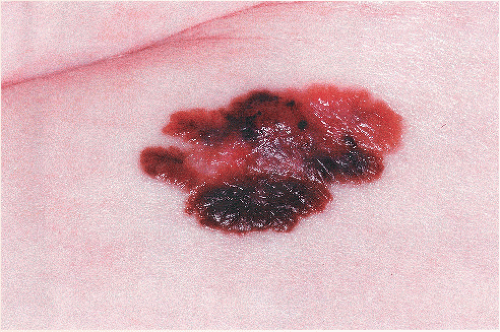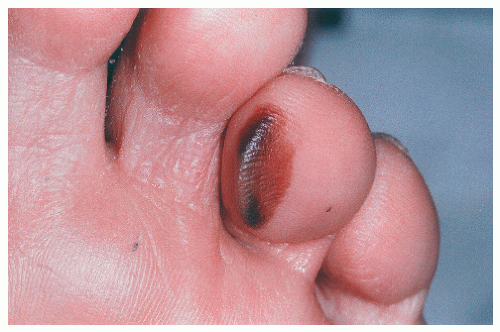Melanoma
Robin S. Weiner MD
Jaeyoung Yoon MD, PhD
SAUER’S NOTES
Malignant melanoma is the best example of how early diagnosis can control cancer mortality.
1. The incidence of melanoma continues to accelerate, but the death rate holds relatively steady.
2. This is not due to more aggressive therapy (surgical margins continue to shrink).
3. This is not because there are better therapies (therapy for metastatic disease remains woefully inadequate).
4. It is because the public and the medical community have increased their diagnostic acumen.
5. Until better therapy arrives, we must continue to press for early adequate skin exam by patient and physician alike.
6. You won’t diagnose it if you don’t look for it!
Melanoma (see malignant melanoma in Chapter 27) is defined as a malignant tumor arising from melanocytes, and although it may develop in a preexisting nevus, more than 50% of cases are believed to arise de novo without a preexisting lesion. Melanomas lacking pigment are termed amelanotic melanomas.
Epidemiology
Cancer of the skin accounts for more than 50% of all cancers, and the majority of skin cancer deaths are attributable to melanoma. The American Cancer Society estimates that in 2008 there were 62,480 new cases of melanoma in this country, with 8,420 deaths from this disease. Incidence rates for melanoma have increased steadily over the past several decades, currently rising at a rate of approximately 3% per year. Melanoma has historically affected a younger population than most cancers, with half the patients under age 57.
Risk Factors
Several risk factors have been identified for the development of melanoma:
Ultraviolet irradiation, with intermittent intense exposure and sunburn posing a greater risk than cumulative lifetime exposure and increasing latitude correlating with decreased incidence of melanoma.
Atypical or dysplastic nevi, especially in families with the so-called dysplastic nevus syndrome.
Increased numbers of benign nevi, with those having greater than 50 nevi being at higher risk of developing melanoma.
Large congenital nevi, defined as greater than 20 cm.
Phenotypic features, including pale or light skin, blonde or red hair, blue or green eyes, a tendency toward freckling, and poor tanning ability.
Family history of melanoma.
Host immunosuppression, which includes transplant patients and patients on chronic immunosuppression for autoimmune diseases.
Genetic predisposition, including defects in the CDKN2A gene and/or the CDK4 gene, and genodermatoses such as xeroderma pigmentosum.
Types of Primary Melanoma
Superficial spreading melanoma (Fig. 29-1) represents the most common clinical subtype, accounting for approximately 70% of cutaneous melanomas. These tumors typically experience a slow horizontal growth phase followed by a rapid vertical growth phase, which may be evident by the development of a papule or nodule. Sites of predilection include the backs of men and the backs and legs of women, although they can occur at any site.
Nodular melanoma accounts for approximately 15% of cutaneous melanomas and has a short radial (horizontal) growth phase, accounting for its rapid invasion. It quickly enters the vertical growth phase. It is seen more frequently in men, and sites of predilection include the trunk, head, and neck. It typically appears as a dark blue-black papule or nodule that develops rapidly and may include a history of ulceration or bleeding. Amelanotic melanoma is often a variant of this subtype.
Acral lentiginous melanoma




Stay updated, free articles. Join our Telegram channel

Full access? Get Clinical Tree










